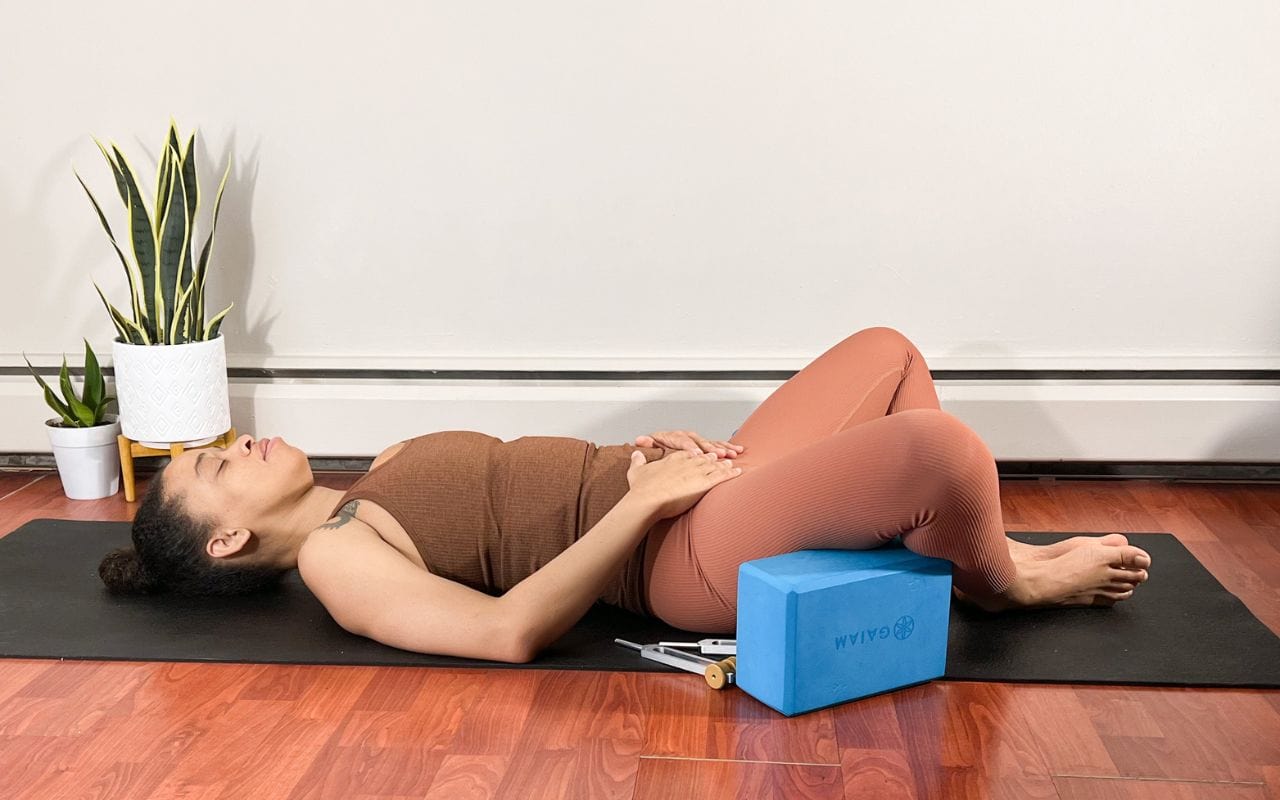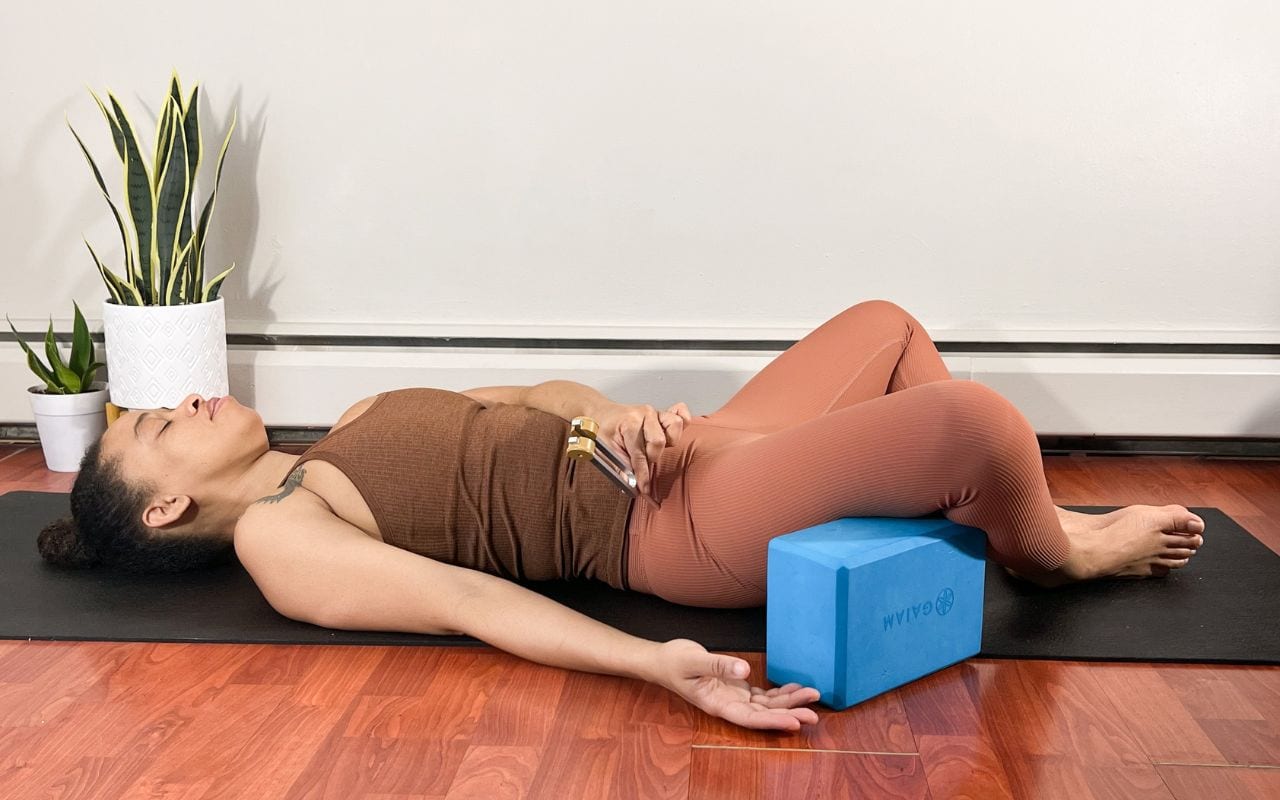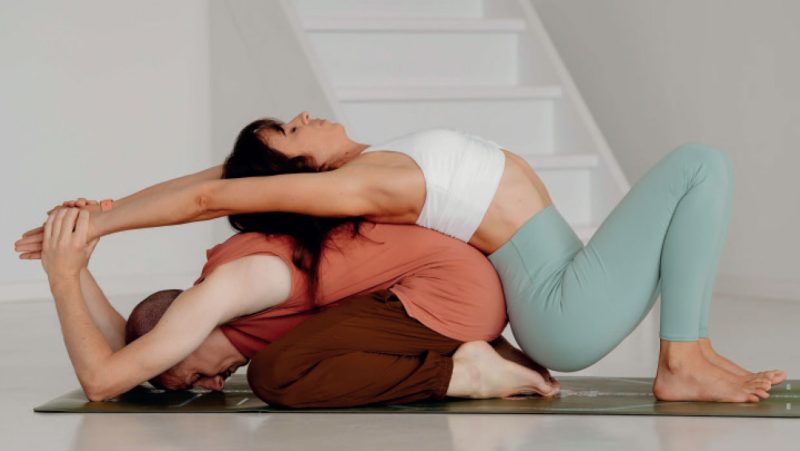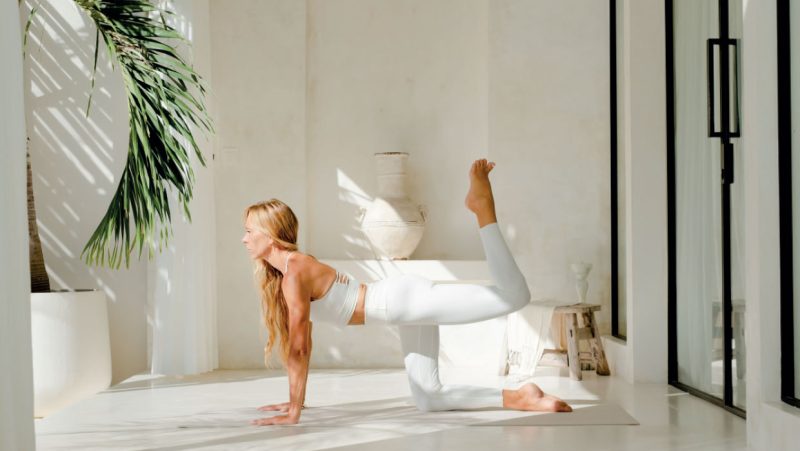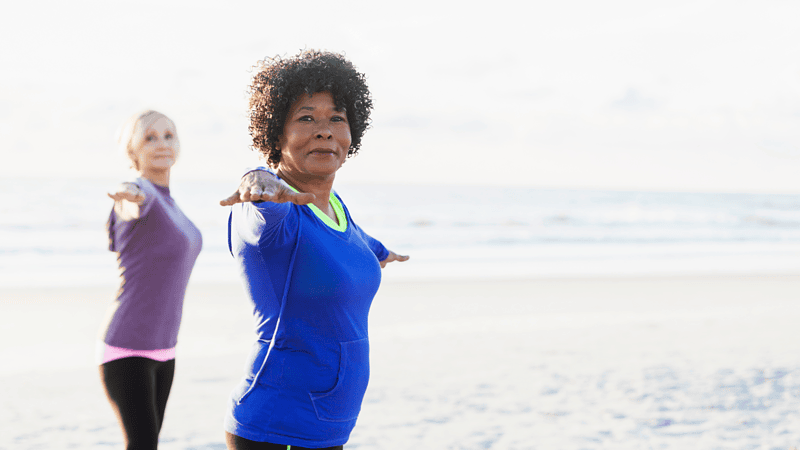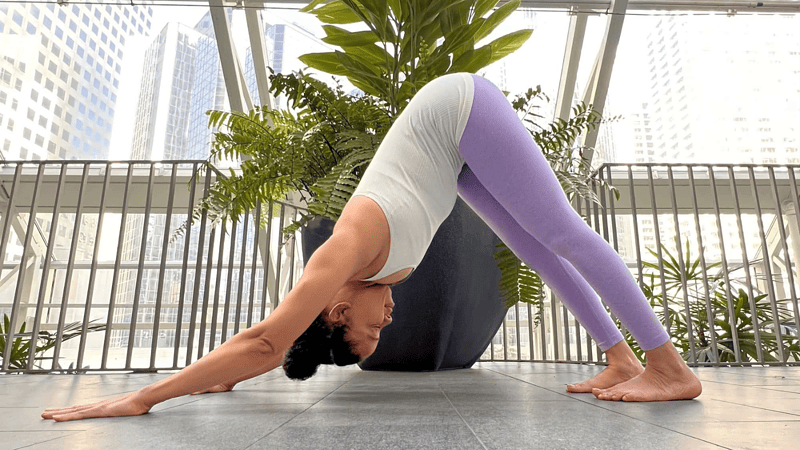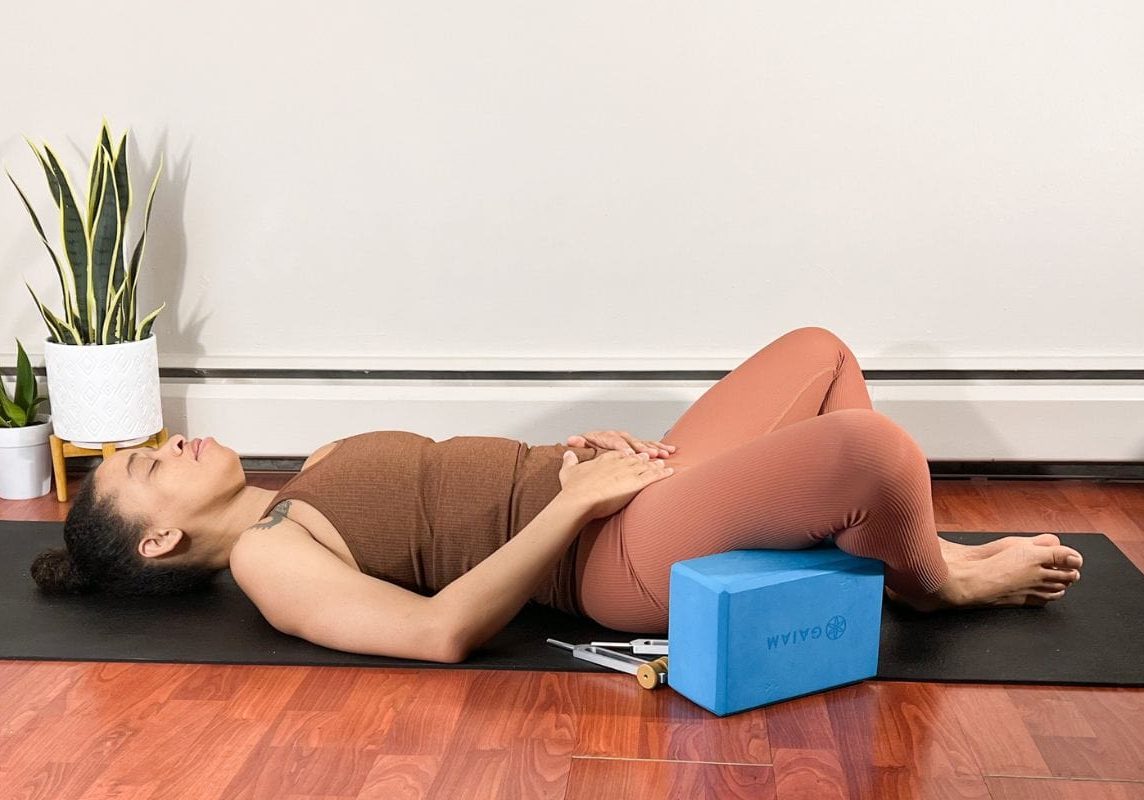
Vibrational yin for happy hips
Try this Vibrational yin sequence for happy hips. By Laurel Stuart
In the world of yoga hip flexibility is an important topic.
How much hip flexibility however is too much?
Do we all need to have our knees touching the floor in butterfly pose (baddha konasana) for our hips to be happy and pain-free?
To have happy hips stability is as equally important as is hip range of motion. Below you'll find a gentle vibrational yin yoga sequence that gently stretches through the hips and pelvis. In Vibrational yin acupoints are stimulated while practicing yin yoga postures. In the below sequence acupoints used to suppose hip health in Traditional Chinese Medicine are stimulated using either sound or massage. In vibrational yin yoga postures are held anywhere from a couple of breaths to a few minutes. The acupoints are stimulated for at least one minute. The hip opening sensations in each pose should be mild in intensity. Enjoy!
Reclining Support Butterfly Pose Stimulating Gall Bladder 29 (Stationary Crevice)
The Acupoint: Gall Bladder 29 (GB29) is a commonly used point by some acupuncturists to treat hip dysfunction. To locate GB 29 first find your ASIS (your anterior superior iliac spine) and the prominence of the greater trochanter of your thigh bone. Place your hands on top of your hip bones with your index finger pointed towards your navel. Use your fingers to find where the hip bones end. That spot is your ASIS. The greater trochanter is the boney prominence that can be felt on the lateral side of your outer thigh. Draw a line from your ASIS to your greater trochanter. GB29 is located at the midpoint of that line.
The Pose: Lie on your back with your feet flat on the floor. Bring the soles of your feet to touch and allow your knees to open towards the floor. Use cushions or blocks under the outer thighs if needed, to support your thighs. Stimulate GB29 three times using a body tuning fork or you can massage the points for at least one minute. Stay in the pose for another 3 minutes. Practice moving the breath into your lower abdomen, hips and pelvis while in this pose. When you are ready to come out of the pose you can use your arms to help move the thighs together. Practice a few rounds of windshield wipers, before moving into the next pose.
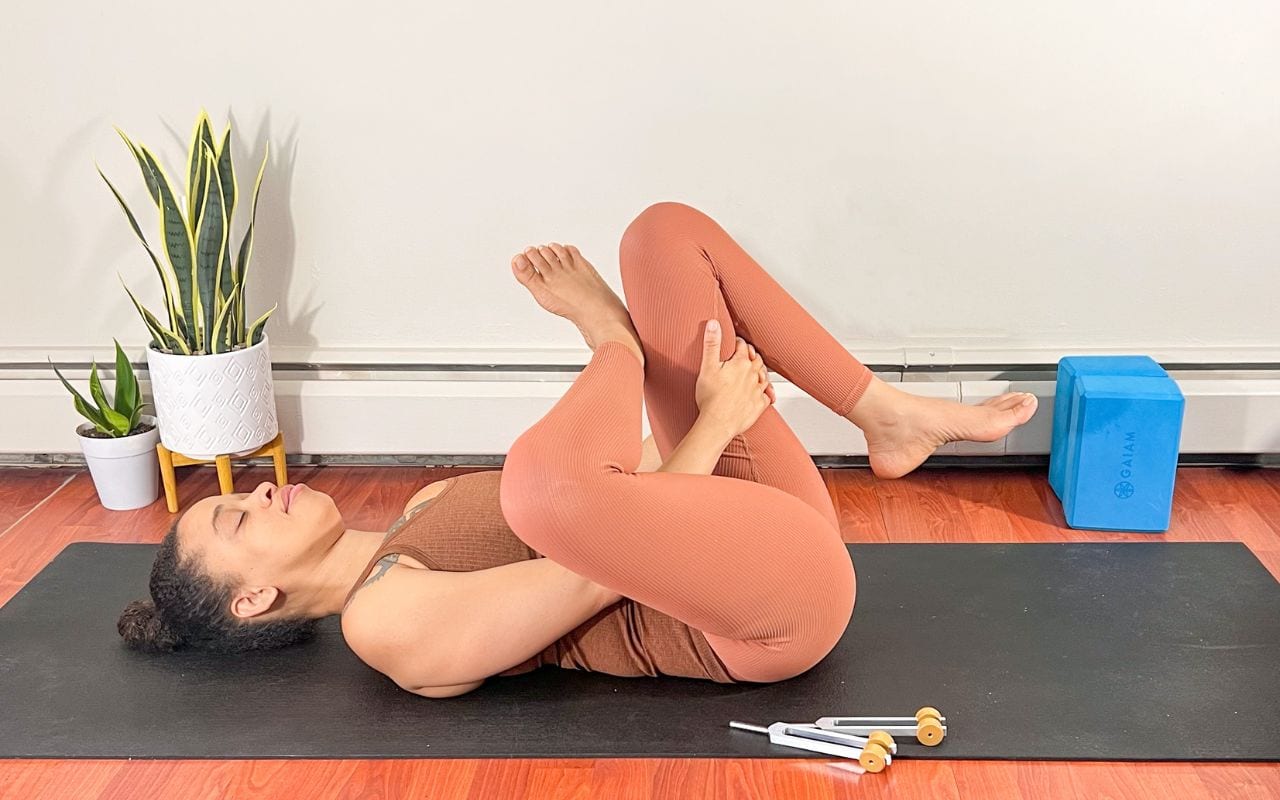
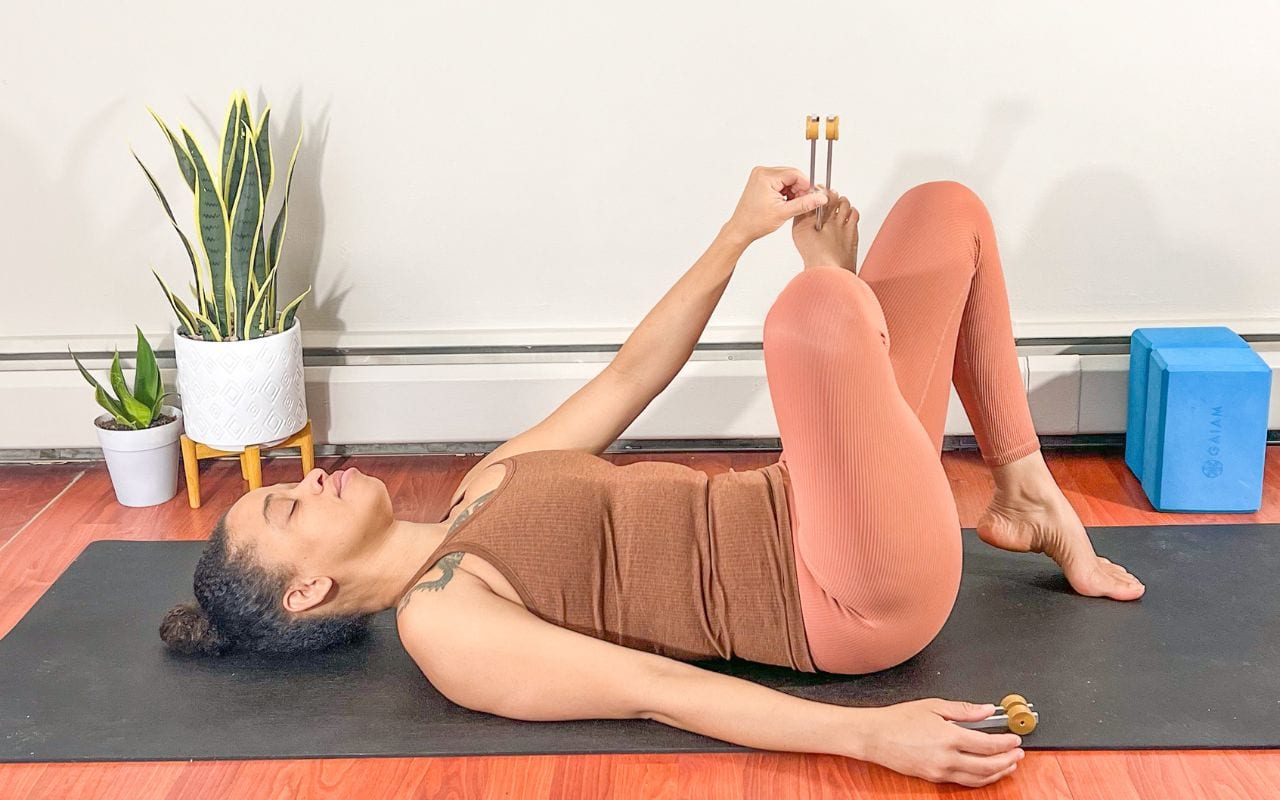
Reclining Figure 4 Pose Stimulating Liver 3 (Great Rushing)
The Acupoint: Liver 3 (LR3) is one of the most important points in the body for both nourishing and moving blood and qi. It is commonly used with Large Intestine 4 (LI4) for all types of pain in the body. The liver meridian is deeply connected to the Gall Bladder meridian. Both these meridians affect hip health. Liver 3 is located on the top of the foot approximately 1 to 1.5 inches from the web space in between the first and second toes.
The Pose: Start on your back with your feet flat on the floor. Cross your left foot over your right thigh. Some persons may feel a stretch in the hips and outer left thigh in this position. Stimulated LR3. If you would like to experience a deeper stretch move your left hand in between your legs, move your right knee towards your chest and interlock your fingers around your right hamstrings or right shin. Stay from 1 to 3 minutes, moving your breath through your belly, lower back and hips. Release the pose and again practice a few rounds of windshield wipers, before repeating on the opposite leg.
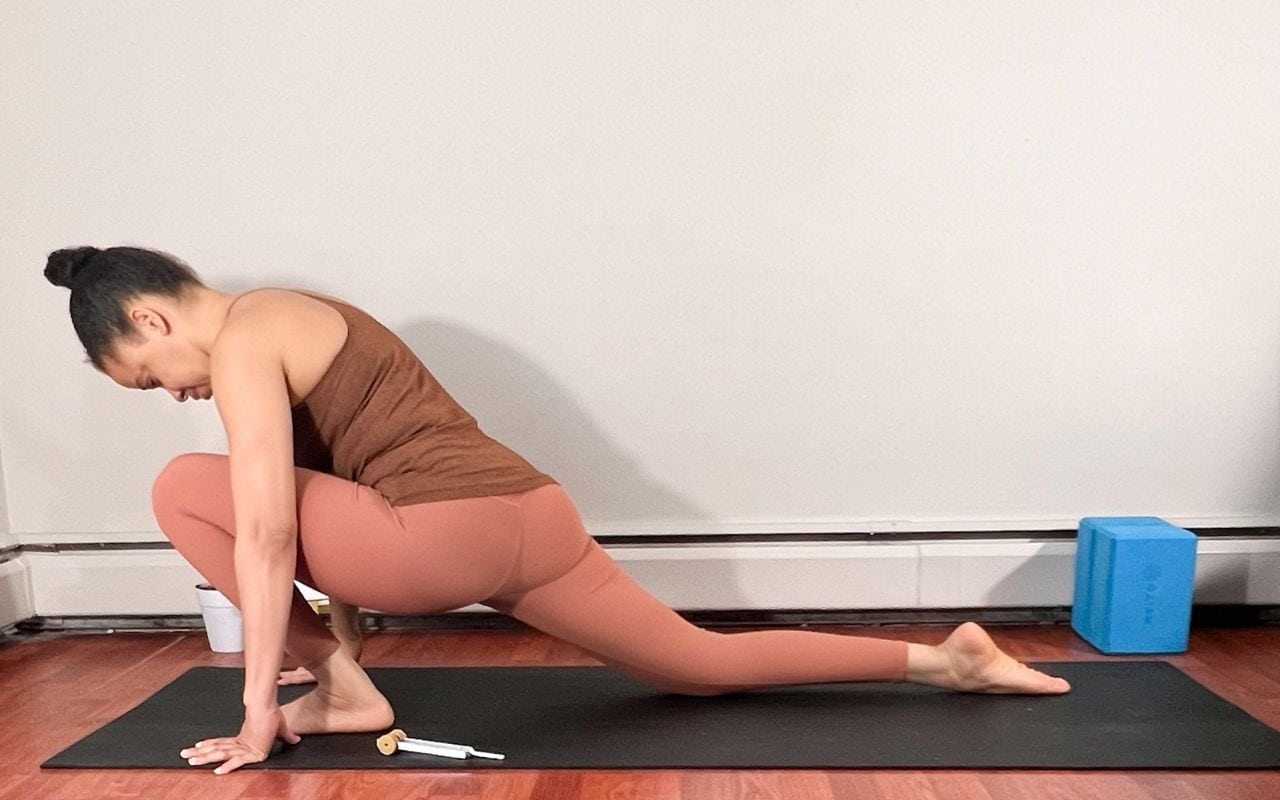
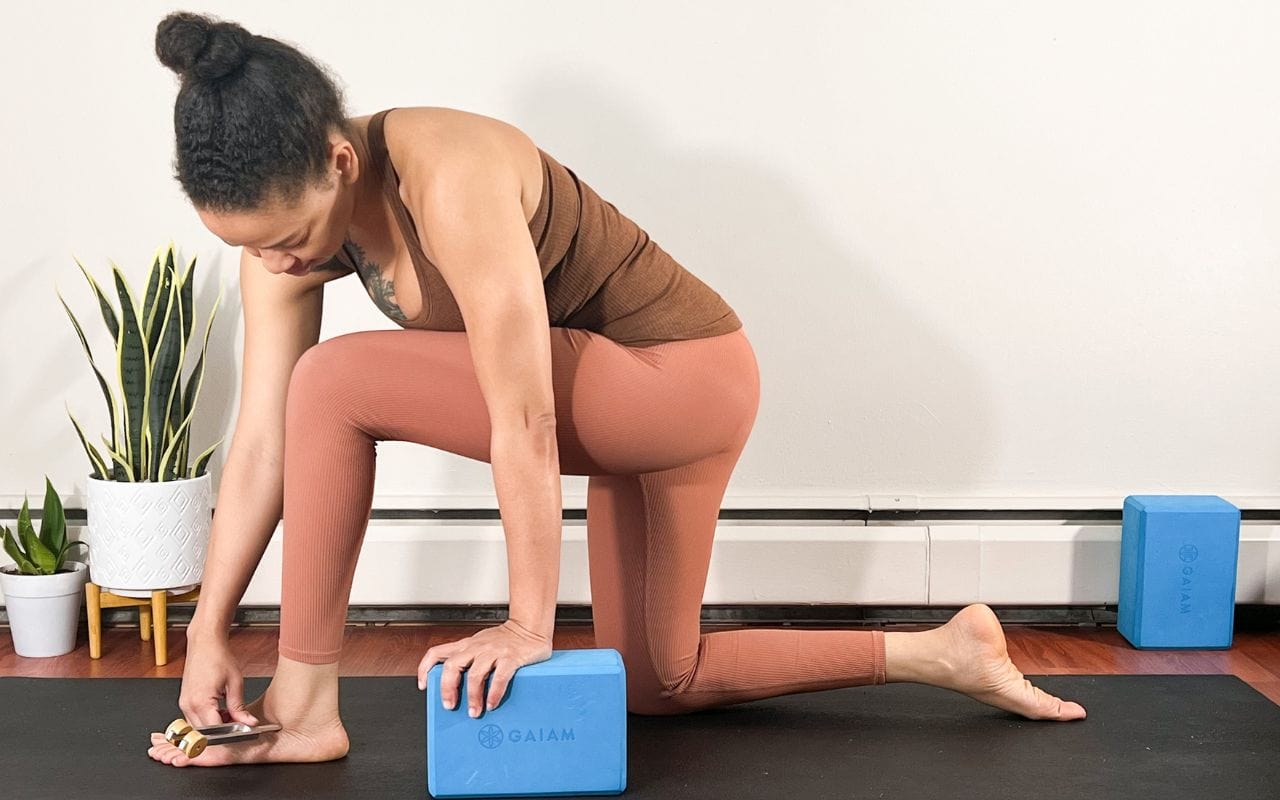
Baby Dragon Pose Stimulating Gall Bladder 40 (Mound of Ruins)
The Acupoint: Gall Bladder 40 (GB40) is commonly used by some acupuncturists to treat joint pain in the hips. The point is located in a depression in front of and below our outer ankles.
The Pose: Start on your hands and knees and step your left foot forward in between your hands. Your hands may rest on the floor or on blocks if reaching the floor is uncomfortable for you. Stimulate GB40 on the left foot then find stillness in the pose for at least a minute. Feel free to explore other versions of dragon pose as well. For example, a twisting dragon can be added to this sequence. Practice the pose on the right leg then move directly into the next pose or spend a few minutes in a mini savasana before continuing the sequence.
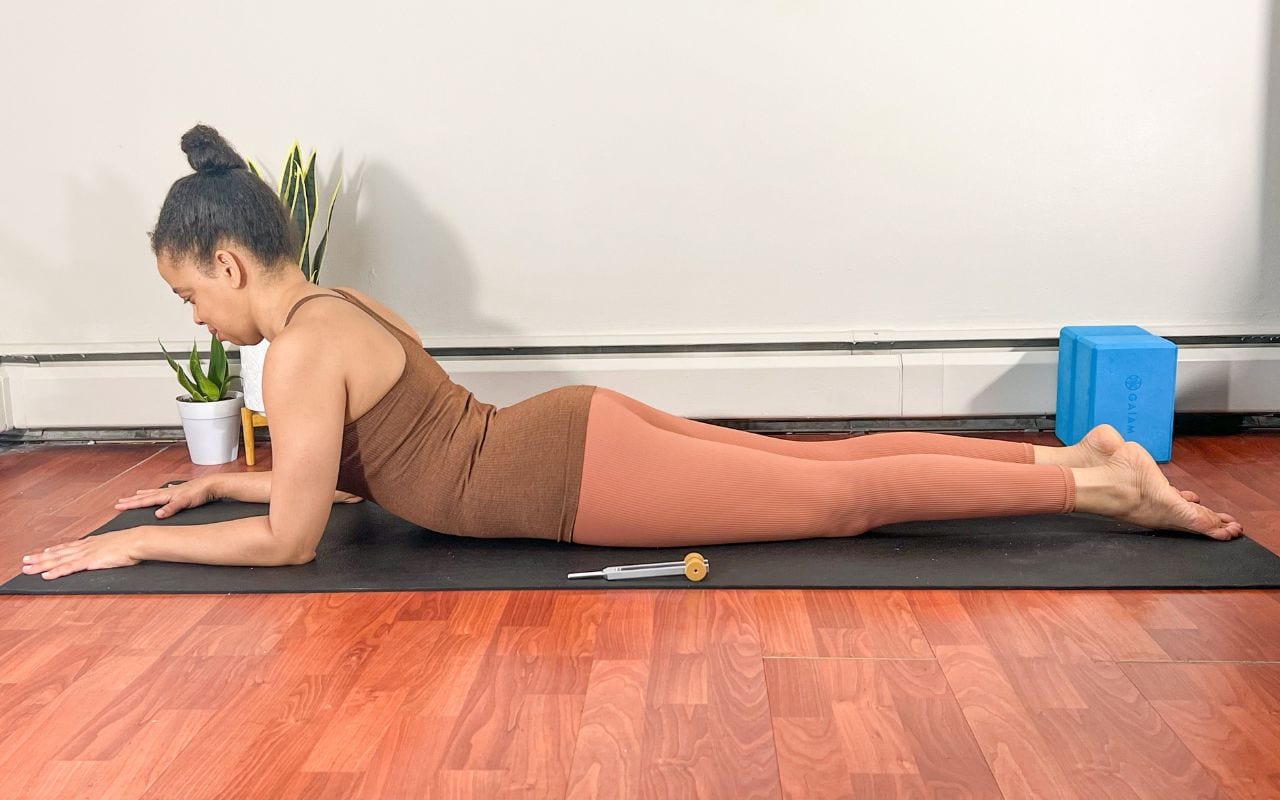
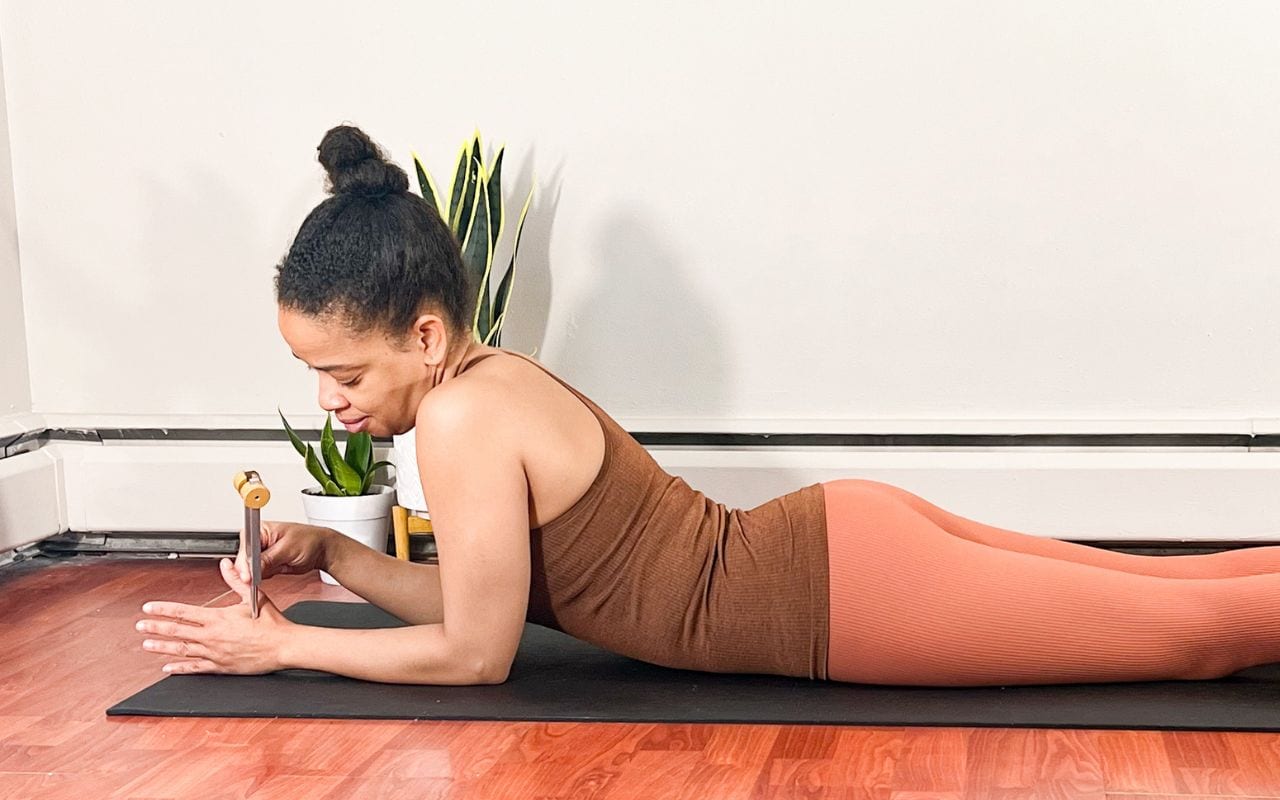
Sphinx Pose Stimulating Large Intestine 4 (Joining Valley)
The Acupoint: Large Intestine 4 (LI4) is an important point in the body for both moving and boosting qi. It is commonly referred to as an analgesic point by acupuncturists for its ability to alleviate pain throughout the entire body. LI4 is located on the top of the hand at the highest point of a bulge made by the muscles in between the thumb and index finger when these fingers are squeezed together.
The Pose: Sphinx pose can benefit back health. Lower back health can sometimes affect our hip health. Start lying on your belly. Lift your chest and place your elbows beneath or slightly in front of your shoulders. You should feel a mild to moderate compression in your lower back. If the sensation is too intense try moving your elbows further ahead of your shoulders. You may even lay head down, forehead resting on your hands if you experience sufficient compression in the lower back in that position. Resting your forearms on top of a bolster or blocks is an option that intensifies the pose. Stimulate LI4 on both hands, then find stillness in the pose. Stay in the pose for 1 to 3 minutes. To release the pose slowly lower your chest to the floor. Practicing child's pose or a few rounds of cat cow poses may feel good after performing sphinx.
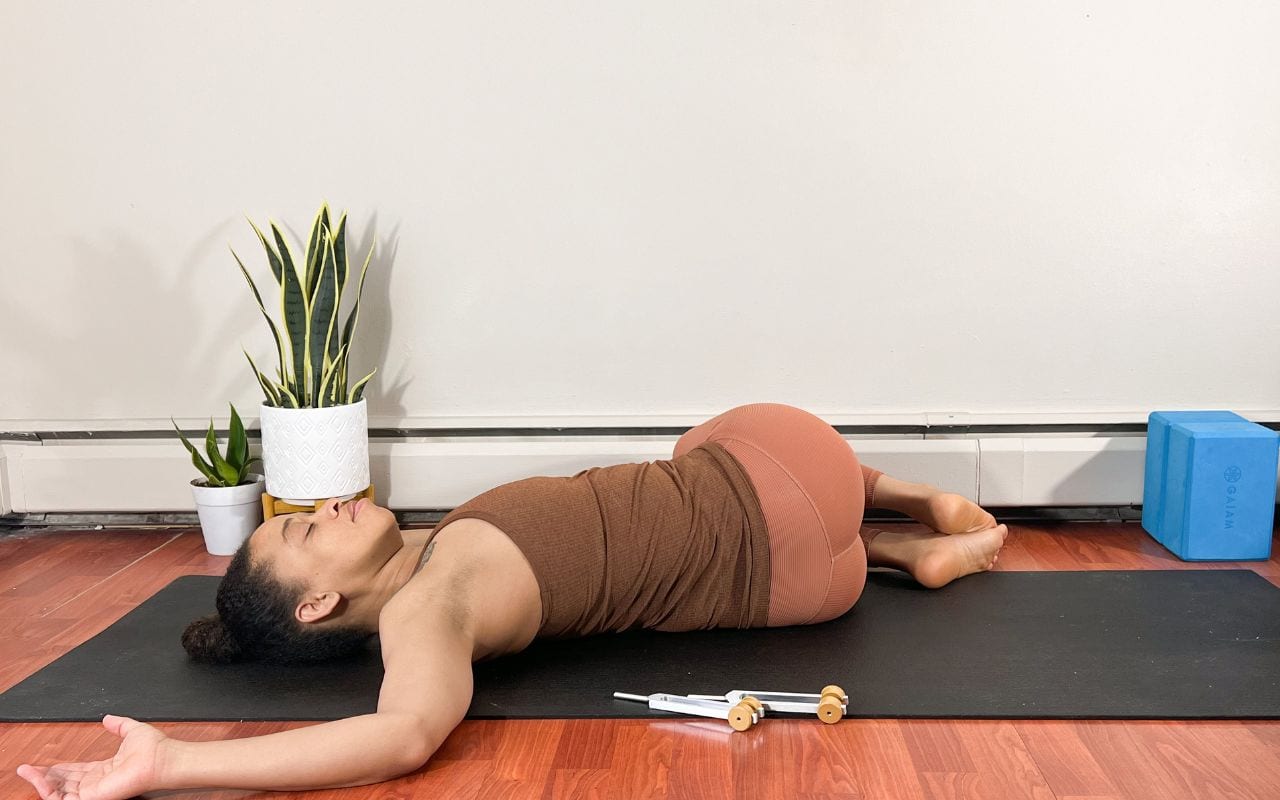
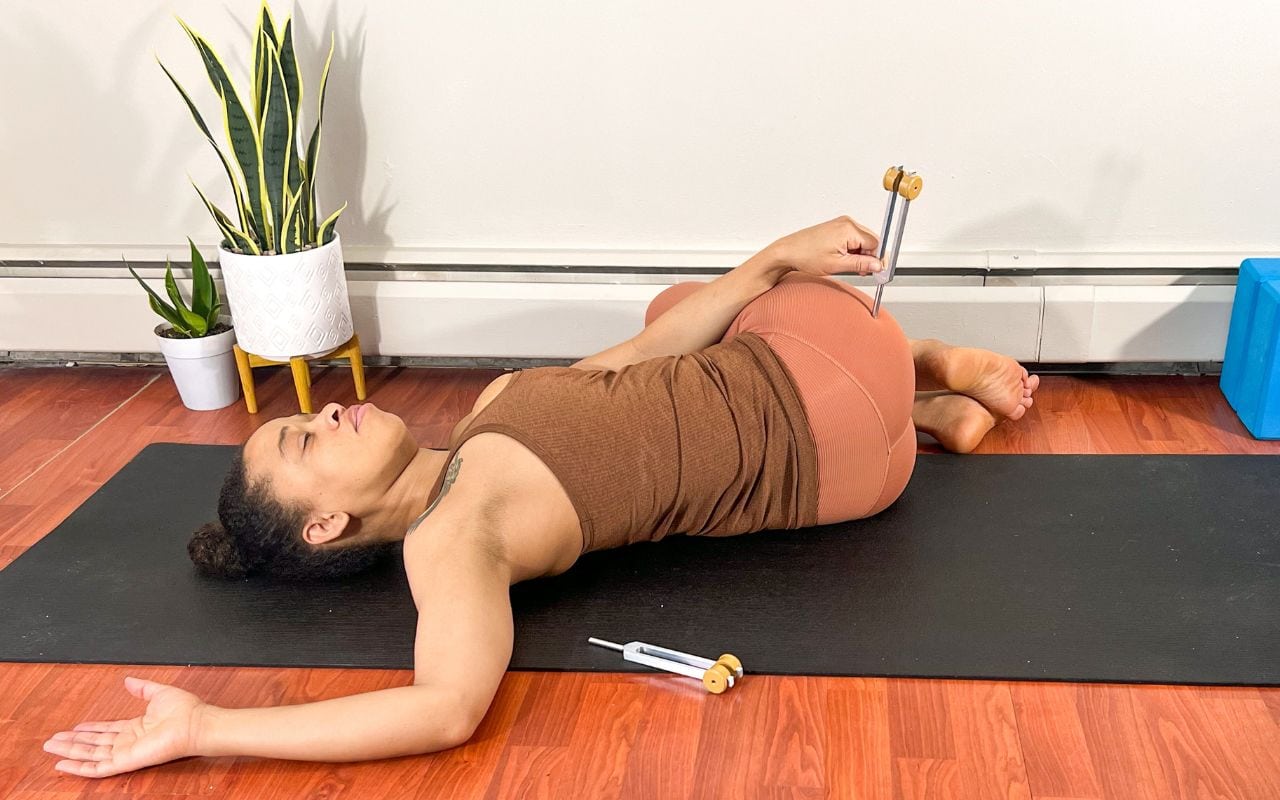
Reclining twist stimulating Gall Bladder 30 (Jumping Circle)
The Acupoint: Gall Bladder 30 is a major point used in clinic for hip health. For the purpose of this article Bladder 30 is located at the midpoint between a line that starts at the highest point of your hip bones at your side and your sit bones. Rest your hands on your hipbones at the side of your body. To find your sit bones sit and place your hands under your buttocks pressing your hands onto the bones you are sitting on. GB30 is located on a diagonal midway between these two landmarks.
The Pose: To come into the pose start lying on your right side with your knees bent. Inhale and twist the upper body over to the left. The left shoulder may or may not touch the floor. Stimulate Gallbladder 30 on the left before extending the left arm fully into your reclining twist. Stay in the twist 2 to 5 minutes. To come out of the pose return to lying fully on your right side, then practice the pose on your opposite side. Feel free to move your body however feels good once you've finished your twists. Alternatively, move into your final Savasana of this sequence.
Namaste.

